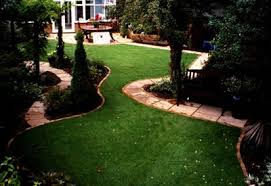
Flower Garden Design[]
A cottage garden express joy and passion. This traditionally has humble, fenced-in plots . Modern versions assume a more romantic aspect, from window boxes to filled dooryards. Meanwhile, a formal garden exudes elegance with its symmetry and geometrical layout. It looks best near a traditional-style home because it embellishes the architecture.Once you have selected a design, sketch a plan. Planning may take a while, depending on the size of the garden. It is not necessary to plot down every single plant on paper; mainly depict the bed layout. Follow a logical scheme for planting. Experts advise that planting gardens must follow a particular order. First, the “specials” or the broad-leafed trees that serve as focal points. Second, the “skeletons” or the evergreens or hedges that provide year-round structure. Third, the “ornamentals” or the flowering shrubs and tall grass.
Landscape Design Ideas[]
Planning makes it easier to decide which plants to buy and where to plant them. In planning a new bed or making existing beds more beautiful, use the different flower garden design tips available. The current style is to have a mixed border of perennials as opposed to the traditional style of segregating plants. Flowering trees and shrubs join small flowering plants in a pleasing harmony. This style is ideal for smaller lawns. Whenever possible, create wider beds for additional plants to have a lush, layered look. Never underestimate what a good garden line can do. A line offers a sense of definition to any garden and sets it apart from others. Group shorter plants in clusters, even if you intend to create a mixed bed. Check how tall each plant will grow. Plants can be categorised into three – edgers, fillers, and backdrop. Edgers are small plants placed on the front of beds, fillers are medium-sized plants placed on the middle, and backdrops are usually tall perennials and annuals. Create unity, continuity and balance in the garden. Limit the colours, shapes and kinds of plants to a harmonious level.A garden with the right design will naturally exude beauty, making any home more comfortable, habitable and welcoming.